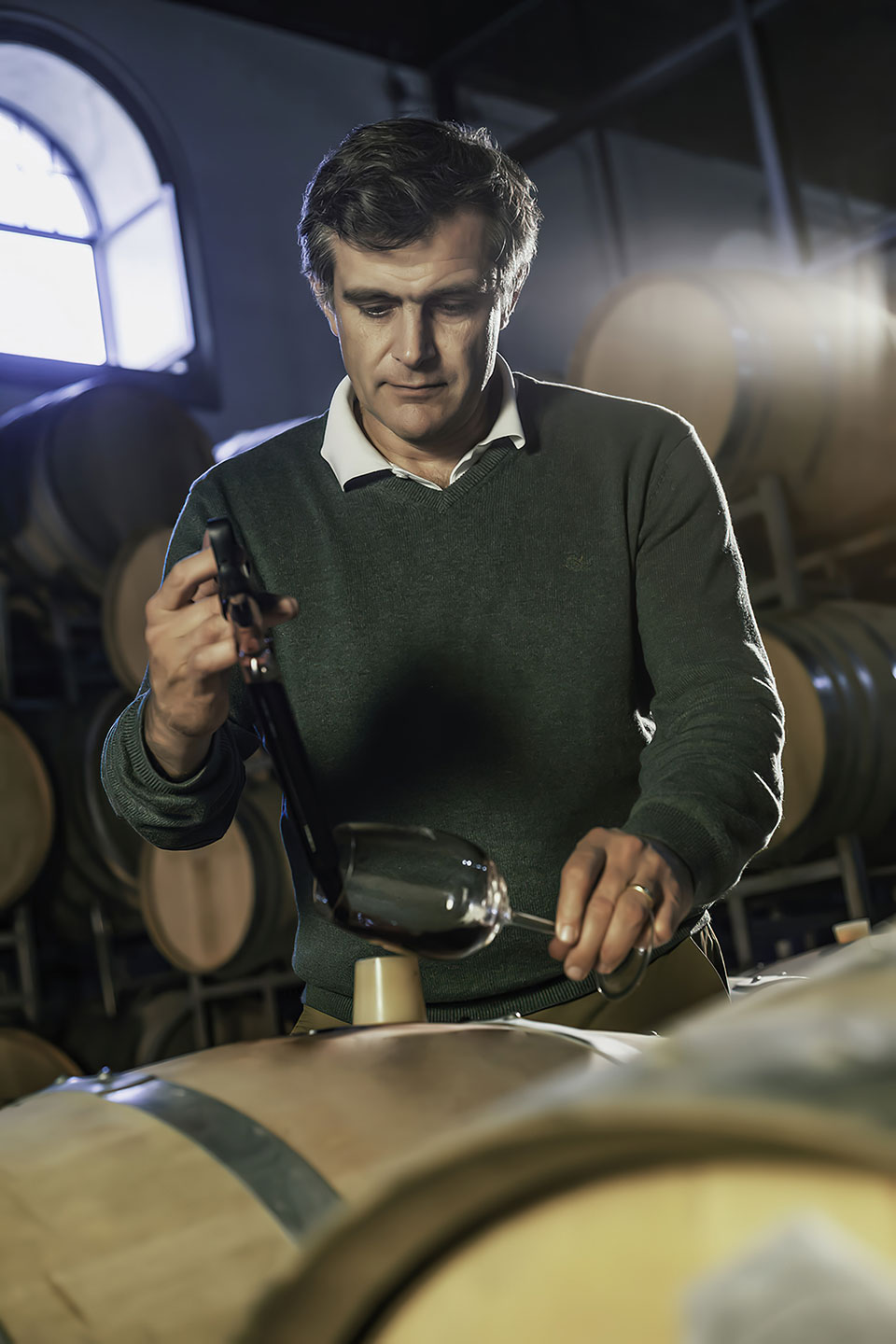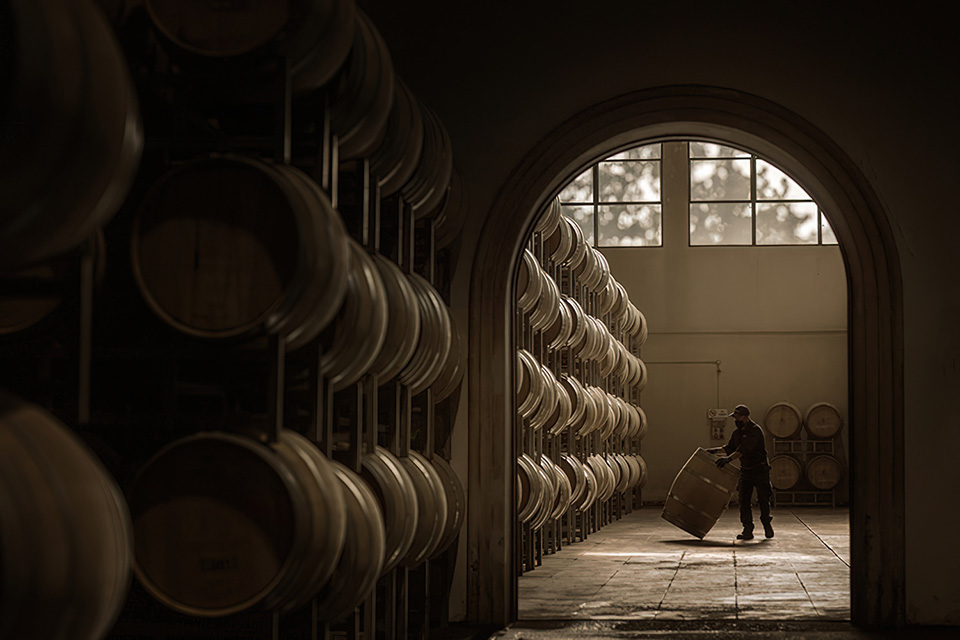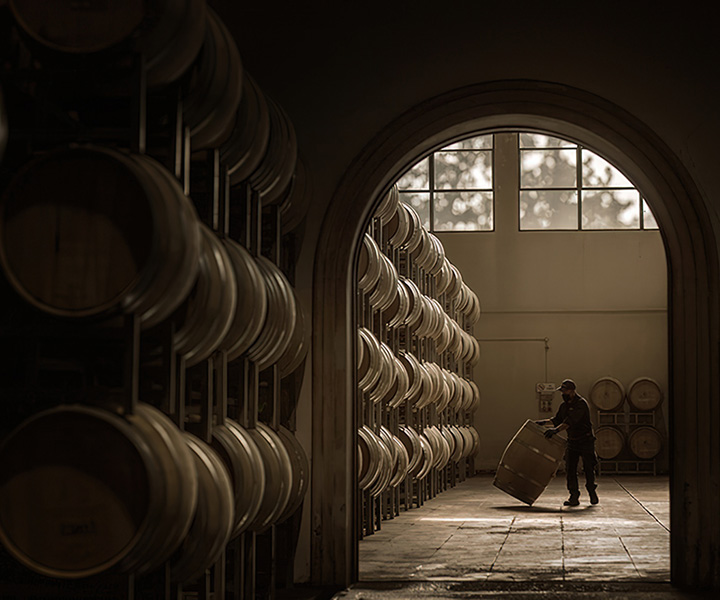Engineer Alberto Arizu (Sir) always repeats this phrase: “the wine is born at the estate”. What is more, in the case of those great wines that embody the spirit of a winery, the hand of the winemaker is reflected, faithfully expressing their terroir. In that instance, the winemaking process is carefully and closely watched over, from the vineyard and up to the bottling stage.
Each great wine is imagined and conceived at the estate. Therefore, the process begins with the selection of its plots or special sectors that give a peculiar expression and top quality wines. Meticulous work is carried out at the chosen plots, ensuring the quality, health and concentration required to achieve healthy fruits, leaving a few bunches per bud and preserving and satisfying the specific needs of each plant throughout the vine’s cycle. Finally, it is essential that grapes be harvested at the peak of ripeness to ensure aromatic accuracy and balance.

To make this great wine, we mainly prefer second-use barrels, to thus achieve a more harmonious balance between wine and wood

To make a wine of these characteristics, the harvest is conducted manually in 18-kilogram boxes, followed by a selection of the best clusters and, subsequently, the finest grapes. Next, each barrack is vinified separately to preserve the aromatic expression and the peculiarities of each sector of the estate. The vinification process in limited volumes, such as oak barrels (with a capacity of 600-1200 litres) and small stainless steel tanks (6000 litres) also allows winemakers to control the extraction, in order to avoid excess tannins and maximise the grape juice’s colour and fruit. Continuing with this precise winemaking process, the maceration techniques also adapt to each type of variety, taking advantage of the timing requirements, and closely following up –through tasting– each batch of wines on a daily basis.
After the vinification process, ageing is also a determinant factor in the final result of the wine, to enhance the fruity character and add structure and body, always preventing the wine from taking the centre stage over the fruit character and the terroir. This way, for example, to make our most important wine, Paraíso, in Luigi Bosca, we usually test over 20 cooperages and 100 types of different barrels, until achieving the most elegant aromatic profiles. To make this great wine, we mainly prefer second-use barrels, to thus achieve a more harmonious balance between wine and wood. Another crucial aspect at this point is the ageing time, so winemakers continuously taste the wines to conclude their ageing process at the right time, and therefore ensure their optimal fruity expression and complexity.
Overall, blends are usually considered the great wines of wineries across the world. For this reason, to make the final blend, the winemaking team selects those barrels that stand out from the rest for their sharpness, aromatic precision, intensity and elegance. In the case of our great wine Paraíso, over 10 tasting sessions were performed until achieving the final result.
Finally, it is well-known that the time devoted to the winemaking process is key to obtain a top quality wine, which needs at least 6-month stowage before its launch onto the market, to acquire complexity, character, harmony and elegance. Thus, great wines are the result of a careful, watchful and, above all, extensive process that begins in the estate and is concluded when a consumer uncorks the bottle and tastes the result of years of work and dedication.



